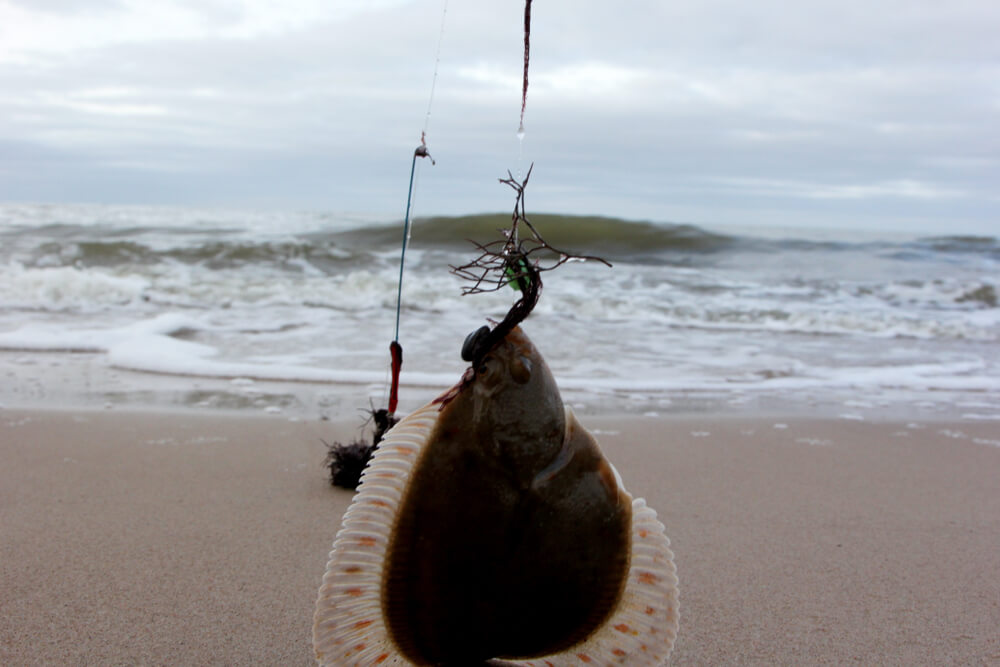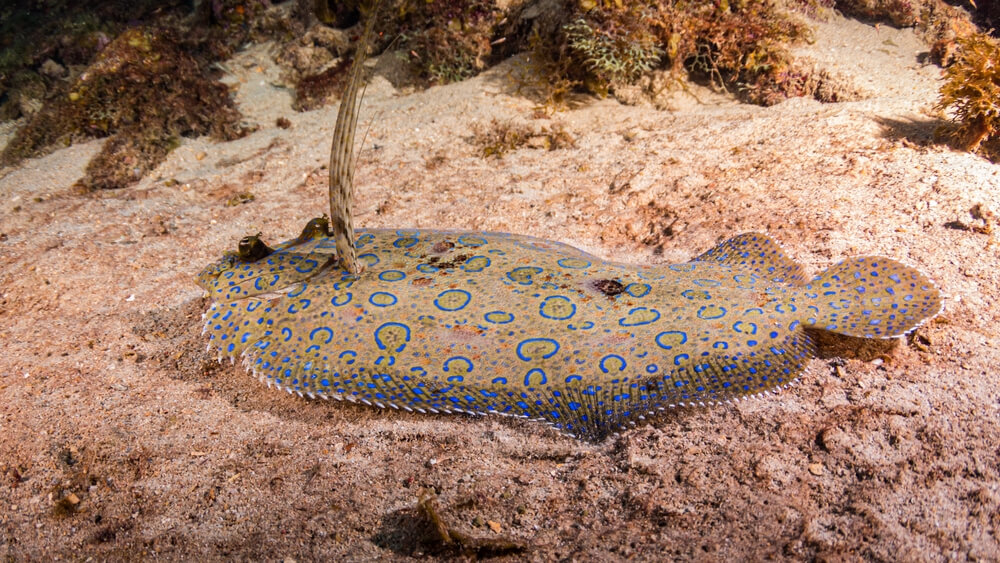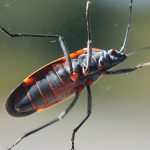
Flounder fishing is a rewarding experience for anglers. This guide provides expert tips and techniques to help you successfully catch flounders, ensuring an enjoyable and fruitful fishing trip.
Understanding Flounder Fish and Their Habitat
Flounder fish, known for their distinctive flat bodies and unique swimming style, are a fascinating group of saltwater fish belonging to the flatfish family. These intriguing creatures are primarily found in coastal waters around the world, thriving in both temperate and tropical regions. Understanding the habitat of flounder fish is essential to appreciate their adaptability and ecological significance.
Flounders typically inhabit sandy or muddy bottoms of shallow coastal waters, estuaries, and even river mouths. They are adept at blending into their surroundings thanks to their camouflaged appearance, which helps them avoid predators and ambush prey. The various species of flounder can be found at different depths, ranging from just a few feet below the surface to several hundred feet deep.
There are numerous species of flounder, each with its own specific habitat preferences. For instance, the summer flounder (Paralichthys dentatus) is commonly found along the Atlantic coast of North America, while the European flounder (Platichthys flesus) inhabits both marine and brackish environments across Europe. Despite these differences in distribution, all flounders share a common trait: they start life with symmetrical bodies but undergo a remarkable transformation as they mature. One eye migrates to join the other on one side of their body, a characteristic feature that aids in their bottom-dwelling lifestyle.
Understanding where flounders live and how they adapt to their habitats provides valuable insight into these unique saltwater fish. Their ability to thrive in diverse environments underscores their importance within marine ecosystems and highlights the incredible adaptability of flatfish species worldwide.
The Best Time and Season to Catch Flounder

Flounder fishing is a popular activity among anglers, but knowing the best time and season to catch flounder can significantly enhance your success. The flounder fishing season typically peaks during the warmer months, from late spring through early fall. However, the optimal time can vary depending on your location.
In many regions, the best time for flounder fishing is during the summer months when water temperatures are higher. Flounders tend to move closer to shorelines and into shallow waters where they are easier to catch. Early morning and late afternoon are particularly productive times of day for catching flounders because these periods coincide with their feeding habits.
Seasonal fishing tips suggest that during spring and fall migrations, flounders move between deeper offshore waters and shallower coastal areas. This movement provides excellent opportunities for anglers to target them as they travel along predictable routes.
Understanding the seasonal behavior of flounders and aligning your fishing efforts with their migration patterns can greatly improve your chances of a successful catch. Whether you’re a seasoned angler or new to the sport, timing your trips according to these guidelines will help you make the most out of your flounder fishing adventures.
Essential Gear and Equipment for Flounder Fishing
When it comes to flounder fishing, having the right gear and equipment can make all the difference in your success. Let’s dive into the essential items you’ll need for a productive flounder fishing trip.
Fishing Rods for Flounders
Selecting the appropriate fishing rod is crucial. A medium-light to medium-heavy spinning rod, typically ranging from 6 to 7 feet in length, provides the right balance of sensitivity and strength. This allows you to detect the subtle bites of flounders while providing enough backbone to handle these flatfish effectively.
Best Bait for Flounders
Choosing the best bait is another critical aspect. Live bait such as minnows, mud minnows, and finger mullet are highly effective for attracting flounders. Additionally, artificial lures like soft plastic grubs or Gulp! baits can also work wonders when rigged properly.
Tackle Setup for Fluke Fish
A well-thought-out tackle setup is key to a successful outing. For fluke fish (another name for summer flounder), a standard bottom rig with a sinker weight appropriate for your fishing conditions will keep your bait near the seafloor where these fish dwell. Use fluorocarbon leaders of about 20-30 pounds test strength to ensure invisibility underwater while maintaining durability against sharp teeth and rough terrain.
Having this essential gear will significantly enhance your chances of landing that prized flounder on your next fishing adventure.
Proven Techniques to Successfully Catch Flounders
Flounders, also known as fluke, are a prized catch for many anglers due to their delicious taste and challenging nature. To successfully catch flounders, it’s essential to employ proven techniques that cater to their unique behavior and habitat.
One of the most effective fluke fishing techniques is drift fishing. This method involves allowing your boat to move naturally with the current while your bait or lure drifts along the seabed. Flounders are bottom dwellers, so this technique increases your chances of presenting the bait right in front of them. Make sure to use a weighted rig that keeps your bait near the ocean floor.
Another highly effective method is jigging. Jigging methods for flounders involve using a jig designed to mimic small fish or crustaceans that flounders prey on. By vertically moving the jig up and down in a rhythmic pattern, you create an enticing motion that can attract nearby flatfish.
When learning how to catch flatfish, it’s also crucial to consider the type of bait you use. Live baits such as minnows, shrimp, and squid tend to be very effective. Additionally, using scented artificial baits can increase your chances since they appeal directly to the flounder’s keen sense of smell.
In summary, mastering drift fishing for fluke and employing precise jigging methods can significantly enhance your success rate when targeting these elusive flatfish. By understanding their habits and preferences through these proven techniques, you’ll be well on your way to a fruitful day on the water.
The Importance of Tides and Water Conditions in Flounding Fishing Success
When it comes to flounder fishing, understanding the importance of tides and water conditions can significantly enhance your success. Tides play a crucial role in fish behavior, influencing where and when flounders are most likely to be found. During rising tides, flounders often move closer to shore in search of food brought in by the incoming water. Conversely, during falling tides, they may retreat to deeper waters.
The best water conditions for catching fish typically include clear water with moderate currents. Flounders rely on their ability to ambush prey from the sandy or muddy bottoms they inhabit, so visibility and current strength can affect their feeding patterns. Calm waters allow for better visibility and easier movement for both anglers and fish.
For anglers looking to optimize their fishing trips, tide charts are indispensable tools. These charts provide detailed information about high and low tides, helping you plan your outings when fish activity is at its peak. By aligning your fishing schedule with favorable tidal movements and ideal water conditions, you increase your chances of a successful catch.
Understanding how tides impact fish behavior and knowing the best water conditions for catching flounder can transform an ordinary fishing trip into a highly productive one. So next time you head out for some flounder fishing, make sure to consult tide charts and keep an eye on the water conditions.
Sustainable Practices Ensuring the Future of Flounder Fishing
Sustainable angling practices are essential to preserving flounder populations and ensuring that future generations can enjoy this valuable resource. One of the most effective methods to promote sustainability is the practice of catch and release. Here are some key tips for responsible catch and release:
1. Use Barbless Hooks: Barbless hooks cause less damage to fish, making it easier to release them without injury.
2. Handle with Care: Wet your hands before handling a fish to reduce the removal of their protective slime coating, which helps prevent infections.
3. Minimize Air Exposure: Keep the fish in water as much as possible during handling and quickly return it after unhooking.
Beyond individual actions, broader conservation efforts are crucial for maintaining healthy marine life ecosystems. This includes supporting policies that protect critical habitats, reducing pollution, and participating in local conservation programs.
By adopting these sustainable angling practices and supporting broader conservation initiatives, we can ensure a thriving future for flounder fishing while protecting our precious marine life.
Start Your Adventure in Floinder Fishing Today!
Flounder fishing offers a unique and rewarding experience for anglers of all skill levels. Whether you’re a seasoned fisherman or just starting out, targeting flounder can provide both excitement and a sense of accomplishment. These flatfish are known for their elusive nature, often hiding in sandy or muddy bottoms, making the catch all the more satisfying.
To begin your adventure in flounder fishing, it’s essential to equip yourself with the right gear. A medium-action rod paired with a spinning reel is ideal for this type of fishing. Additionally, using bait such as live minnows, shrimp, or artificial lures can significantly increase your chances of success.
Understanding the behavior and habitat of flounder is crucial. Typically found in coastal waters, estuaries, and bays, flounders are bottom dwellers that prefer areas with plenty of cover. Fishing during high tide or around structures like piers and docks can enhance your opportunities.
Remember to check local regulations regarding size limits and seasonal restrictions to ensure sustainable practices. With patience and persistence, you’ll find that flounder fishing not only enriches your angling skills but also provides an enjoyable outdoor activity.
So why wait? Start planning your next trip today and dive into the exciting world of flounder fishing!



